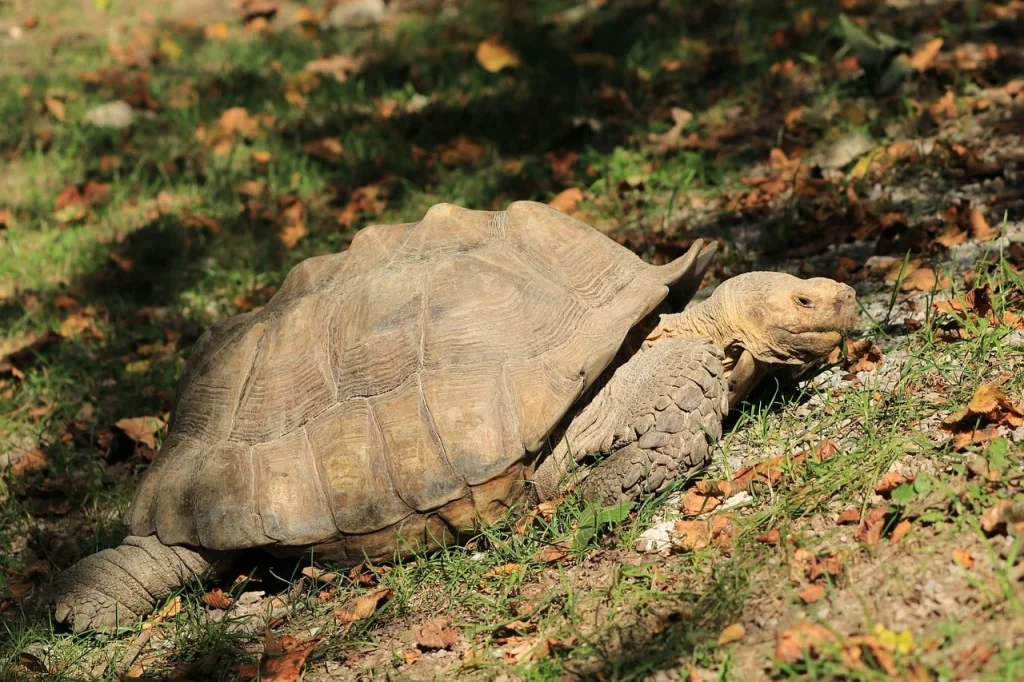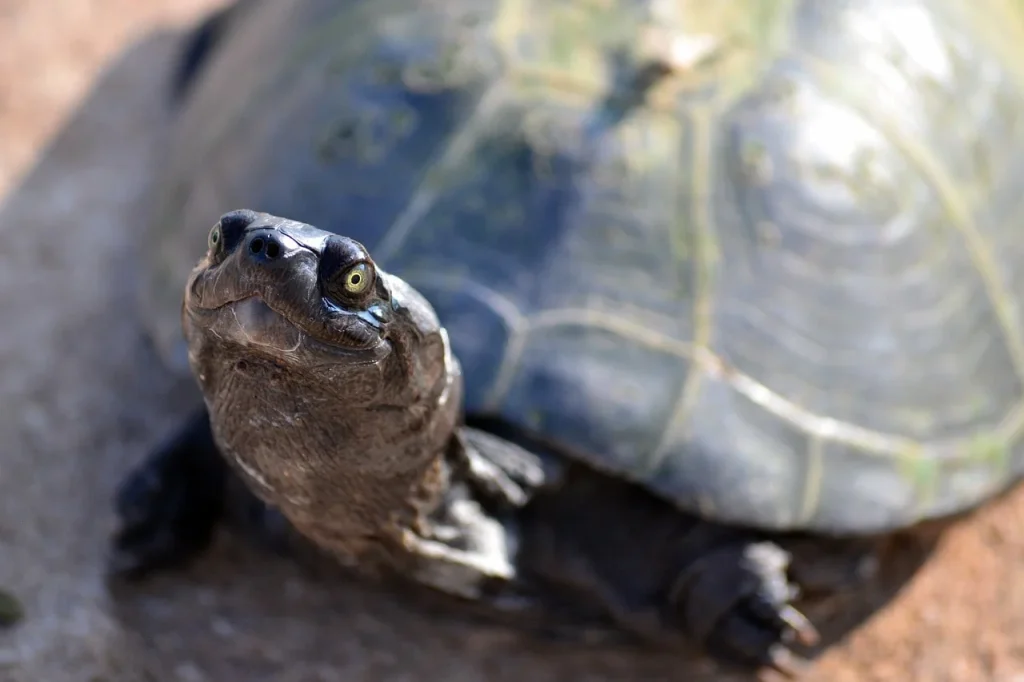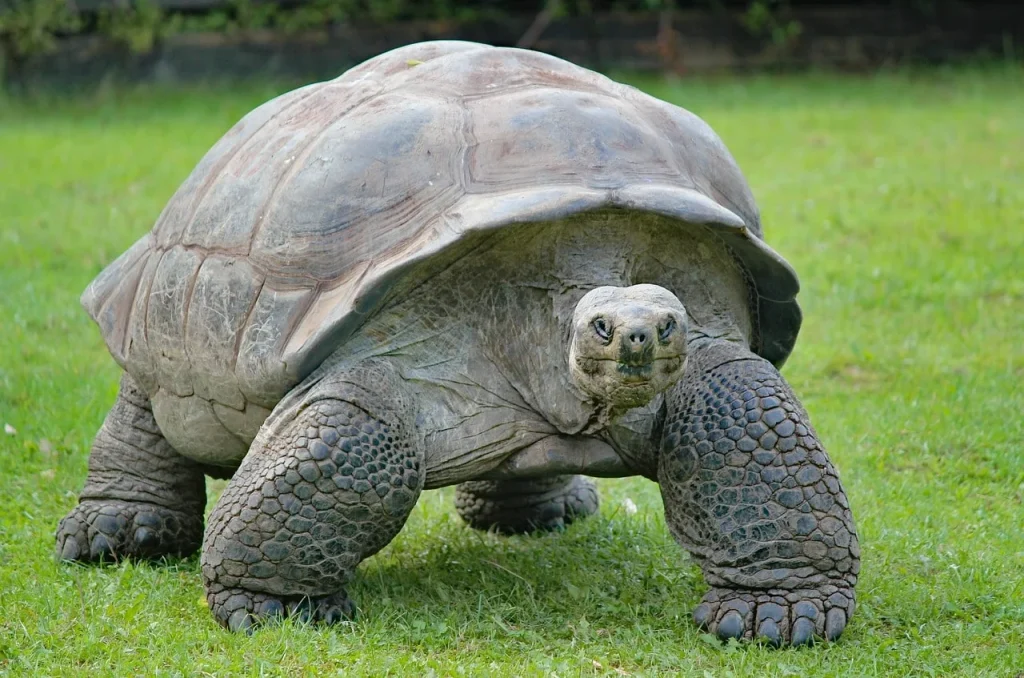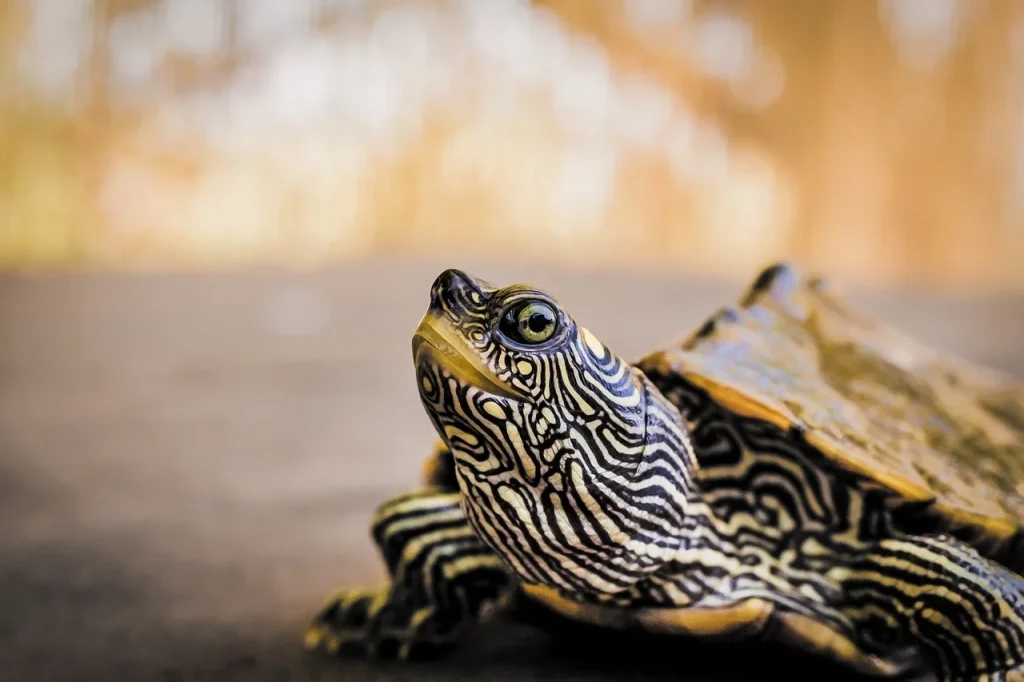Imagine living your life in a mobile home you can never leave—that’s everyday reality for turtles! These shelled wanderers have roamed our planet for centuries, and in this blog post, I am excited to share some facts that highlight their extraordinary lives.
From swimming in the oceans to basking on sunny shores, they have some quirky traits that might just surprise you. For instance, did you know that they have a favorite sunbathing spot? Let’s start our journey.
I have always loved tortoises and turtles. Their beautiful hard shell hides a gentle soul, wise with age and experience.
Jane Goodall
Turtle Facts
Get ready to explore the intriguing realm of turtles! Read each fact carefully, as a quiz at the end of this article will challenge you to prove your expertise on them.
- These creatures can detect vibrations in water through their shells, which helps them avoid predators.
- Some species use the Earth’s magnetic field to navigate across vast distances in the ocean.
- Their tears help rid their bodies of excess salt, especially after extended periods in saline water.
- A unique species, the Mary River turtle, breathes through specialized glands in its tail.
- Bioluminescent algae can grow on their shells, causing them to glow mysteriously in the dark.
- The alligator snapping species uses a red, worm-like lure in its mouth to attract fish.
- During hibernation, some turtles can absorb oxygen directly through their skin.
- Temperature determines the sex of their eggs; warm temperatures typically yield females, while cooler ones produce males.
- They have existed since the time of the dinosaurs, with fossils dating back over 200 million years.
- The smallest species, the speckled padloper from South Africa, can fit on a standard postcard.
- Leatherbacks can dive deeper than 1,200 meters, making them one of the deepest diving marine animals.
- Some species can live without food or water for several months, relying solely on stored energy reserves.
- Despite their hard shells, they can feel pressure and light touches due to nerve endings in their skin beneath.

- Their shells are not detachable; they are part of their skeleton, which includes the spine and rib cage.
- They exhibit site fidelity, meaning they often return to the exact spot where they were born to lay their own eggs.
- Some species can communicate with their hatchlings while they are still in the eggs, using low-frequency sounds.
- Flatback sea turtles have the smallest migratory range of any sea turtle species, staying mainly around the northern coast of Australia.
- Ghost crabs sometimes prey on hatchlings during their perilous journey from nest to sea.
- Their heart rate can slow down to one beat every 10 minutes while they are diving.
- They have been part of indigenous folklore and mythology around the world, often symbolizing longevity and wisdom.
- Extremely agile in water, they become significantly slower and more vulnerable on land.
- Many cultures consider them a symbol of the world in their mythology, carrying the Earth on their shells.
- The heaviest ever recorded, an adult leatherback, weighed approximately 916 kilograms (2,019 pounds) and was discovered on the Welsh coast.
- Unlike many other reptiles, some species are known to exhibit playful behavior with objects and other sea creatures.
- Climate change poses a significant threat by altering sand temperatures, which affects the sex ratios of newborns.
- Their eggs are coveted by predators not only for their nutritional value but also because they are easy to find and harvest.
- Hawksbill shells were historically used to make tortoiseshell decorative items and jewelry, now largely banned under international law.
- Some can undergo long migrations, traveling thousands of kilometers between feeding grounds and nesting sites without eating.

- Despite having a slow metabolism, they are capable of quick bursts of speed when escaping predators or capturing prey.
- Conservation efforts for these creatures include beach patrols, relocation of eggs to safer areas, and extensive public education campaigns.
- They have special glands that help them remove salt from their bodies, which they ingest while swallowing sea water during feeding.
- Flippers are not just for swimming; they use them with surprising dexterity to dig nests, manipulate food, and even fight.
- Hatchlings have a built-in mechanism called ‘swim frenzy’, which allows them to rapidly swim away from the shore to avoid predators.
- Their age can be estimated by counting the growth rings on the scutes of their shells, similar to tree rings.
- Predators of these creatures include sharks, large fish, and even humans, who have historically hunted them for their meat and eggs.
- In some cultures, they are considered good luck, and images of them are used as charms to ward off evil spirits.
- The gender of the hatchlings can sometimes be influenced by the temperatures experienced during incubation.
- Females can store sperm for several years, allowing them to lay fertile eggs even without mating each season.

- Some traditional medicines in Asia claim health benefits from various parts of their body, although there is no scientific basis for these claims.
- Young hatchlings have an innate instinct to head towards the sea, guided by the natural light horizon over the ocean and an inborn magnetic compass.
- A rare condition known as albinism can occur in these creatures, resulting in individuals with no pigment in their skin and shells.
- They can express a variety of vocalizations, particularly during breeding activities and when communicating with hatchlings.
- Unlike many reptiles, they cannot retract their heads into their shells; instead, they rely on the hardness of their shells for protection.
- The largest populations are found in the Coral Triangle, known for its incredibly high marine biodiversity, including six of the seven known species.
- Beachfront lighting from hotels and homes can disorient hatchlings, causing them to head towards danger rather than the sea.
- Sea grass, essential to marine ecosystems, is maintained by their grazing habits, which helps prevent the grass from becoming overgrown.
- They have a remarkable ability to return to the exact beach where they were hatched, using a process known as natal homing.
- Protective legislation worldwide has increased their population in some areas, though many species remain critically endangered.
- Conservationists sometimes use satellite tracking to study migration patterns and better understand their habitat usage.
- The oldest known individual of their kind was estimated to be over 250 years old, showcasing their potential for extreme longevity.
Turtle Myths

Now that we’ve explored the facts, let’s dive into some common myths. It’s time to separate what’s true from what’s merely a tale.
- Turtles can leave their shells
They are permanently attached to their shells. The shell, composed of bone, is part of the turtle’s skeleton and grows with them throughout their life. It cannot be removed without causing severe harm to the turtle. - Turtles are slow on land
While it is commonly believed that turtles are slow, many species can move quite briskly when necessary, especially when threatened. Land turtles can walk at a decent pace, and aquatic turtles are even faster in water. - Turtles can eat anything
They have specific dietary needs, depending on their species. While some are omnivorous, others might be strictly herbivorous or carnivorous. Care must be taken to ensure their diet is appropriate for their specific nutritional requirements. - Turtles have no sense of hearing
It is often assumed that they cannot hear because they lack external ears, but they do have eardrums covered by skin. Sounds are perceived differently by turtles, who mostly detect vibrations, but they are not completely deaf. - All turtles can swim
Although most of them are proficient swimmers, not all species of turtles are adapted to aquatic life. Tortoises, for example, are primarily land-dwellers and can drown if placed in deep or extensive water bodies.
No products found.
Turtle Quotes

Let’s jump into the world of turtles through the voices of naturalists and poets and discover the wisdom these remarkable creatures evoke.
The turtle lives ‘twixt plated decks which practically conceal its sex. I think it clever of the turtle in such a fix to be so fertile.
Ogden Nash
Poet Ogden Nash humorously comments on the secretive and productive nature of turtles, despite their heavily shielded appearance.
Anytime you see a turtle up on top of a fence post, you know he had some help.
Alex Haley
Alex Haley, the author of “Roots,” uses the image of a turtle on a fence post to illustrate the idea that no one achieves significant success without assistance from others.
Try to be like the turtle – at ease in your own shell.
Bill Copeland
Bill Copeland, an American poet, encourages people to be comfortable and confident in their own skin, much like a turtle is with its shell.
The turtle watches undisturbed as countless generations of faster ‘hares’ run by to quick oblivion, and is thus a model of patience for mankind, and a symbol of our salvation.
Guy Murchie
In this reflection by Guy Murchie, an American writer and philosopher, the turtle is portrayed as a symbol of endurance and timeless wisdom, outliving the fleeting successes of the faster creatures.
Be like a turtle. If he didn’t stick his neck out, he wouldn’t get anywhere at all.
Harvey Mackay
Harvey Mackay, a business author, uses the turtle’s behavior to symbolize the necessity of taking risks and stepping out of comfort zones to achieve progress.
Turtle FAQ

As we prepare to dive into the FAQ section, remember, this is your last stop before the quiz. Read each point carefully to ensure you’re ready to ace it!
- Are turtles reptiles or amphibians?
They are reptiles. Like other reptiles, they are cold-blooded, have scaly skin, and lay eggs. They belong to a group known as Testudines, which includes both turtles and tortoises. - Can turtles drown?
Yes, they can drown. Although they are aquatic and can hold their breath underwater for extended periods of time, they still need to surface to breathe air. If a turtle is unable to reach the surface, it can drown. - Which turtles stay small?
Some turtle species that remain relatively small include the mud turtle and musk turtle, which typically grow to about 4 to 5 inches in shell length. The spotted turtle is another small species, usually not exceeding 5 inches. - Can turtles see in the dark?
They have decent vision in low-light conditions but are not adapted for complete darkness. Their eyes are better suited to detect movement and navigate their environment during dusk or in murky waters. - Why are turtles slow?
They are slow because their heavy, protective shells make rapid movement challenging. They have evolved to rely more on their armor for protection against predators than on speed, which influences their overall slower pace of life.
No products found.
Turtle Trivia

Welcome to the Great Turtle Quiz! Better not shell-ter the wrong answers, or you might find yourself turning into a human terrarium!
Turtle Merch
If you are a true fan of turtles, then you definitely need to check out our merchandise. You can find T-shirts, hoodies, mugs, and tote bags for your favorite designs. Feel free to check out all the other designs in our shop.
Conclusion
In wrapping up, it’s clear that turtles are remarkable creatures with some amazing features. From their long lifespan to their ability to travel vast distances, turtles continue to fascinate and inspire us.
Their presence is vital for ecological balance and reminds us of the importance of environmental protection. So, next time you see a turtle, remember just how special and significant these animals are. Till next time, stay curious and explore more. Cheers.



1 Comment
Hello,
My name is Jonathan, and I truly admire your company and the amazing work you’re doing.
I wanted to contact you with an amazing offer: a complimentary article on Benzinga! With over 14 million monthly readers, it’s an excellent opportunity to enhance your brand’s trust. And for just $79, we will be publishing affiliates of FOX, CBS, and ABC along with 300 more outlets.
We could also get your article featured on outlets like Business Insider, Yahoo Finance, and Market Watch—imagine the reach!
If you’re looking in claiming your free Benzinga article, just respond by typing “YES, I would like to get published in Benzinga”! I’d love to help you earn the visibility you should have.
{{Best|Regards|Best regards|Kind regards|Warm regards|Cheers|Thanks},
Jonathan
PR Boost
If you don’t want to get an email from me on this matter again, please reply back with the text: “No, thank you”